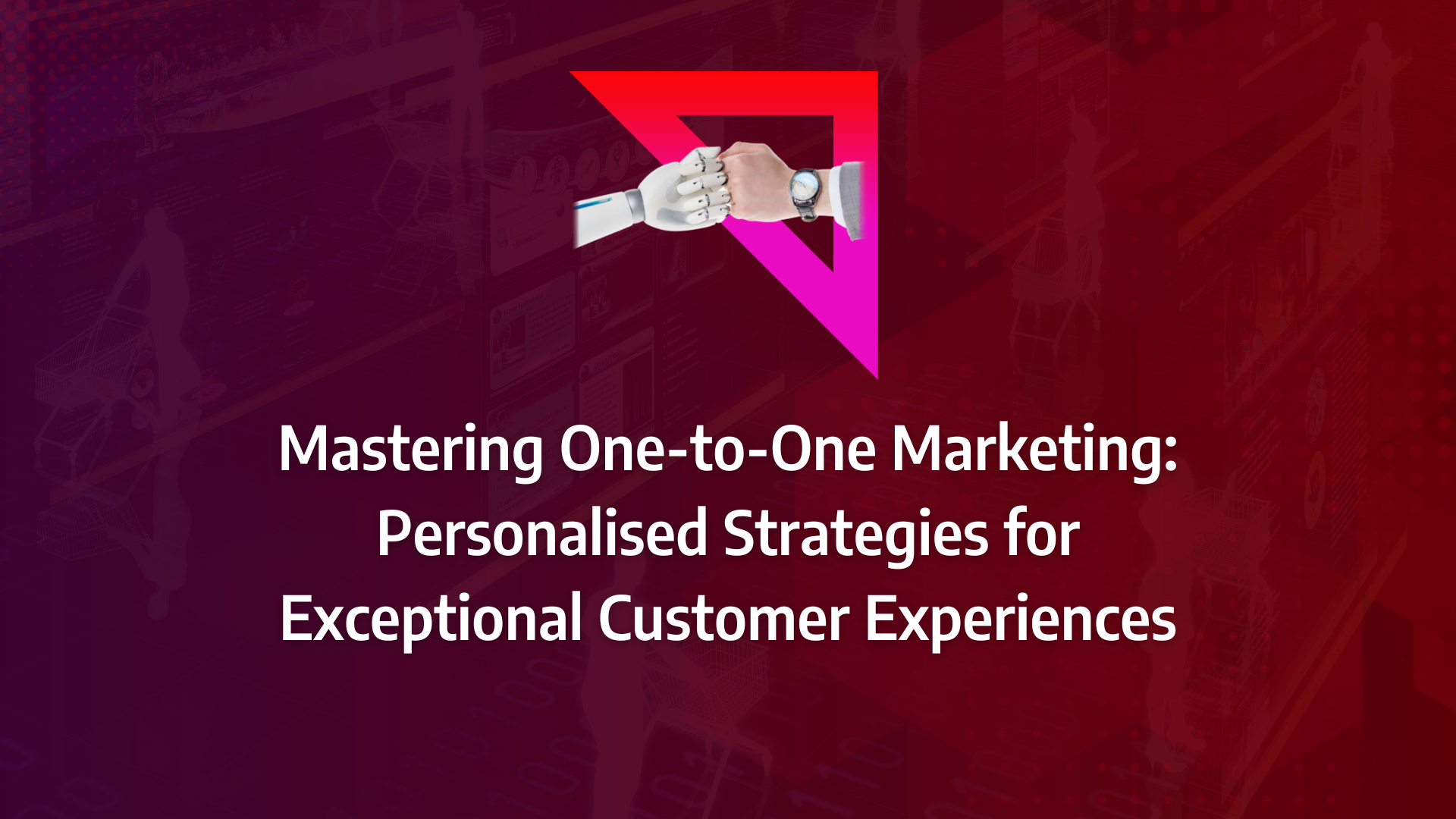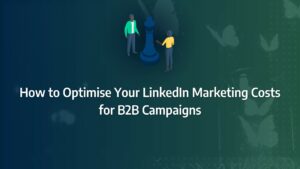Imagine a world where every interaction with your customer feels tailor-made, where your marketing speaks directly to individual needs, and where each communication strengthens the bond between your brand and its audience. This is the promise of one-to-one marketing—a transformative approach that goes beyond generic campaigns to deliver truly personalised experiences.
In this blog, we’ll explore how to harness the power of one-to-one marketing, from leveraging cutting-edge tools to overcoming the challenges of data management. Whether you’re looking to deepen customer relationships or drive higher conversion rates, these strategies will equip you to deliver exceptional, personalised customer experiences.
- Embrace Personalisation with One-to-One Marketing: Shift your focus from broad-based campaigns to personalised marketing strategies that cater to individual customer needs, enhancing engagement and satisfaction.
- Leverage Advanced Data Analytics: Utilise data analytics and CRM tools to gain deep insights into customer behaviour, enabling you to craft personalised marketing messages that resonate.
- Integrate AI for Enhanced Personalisation: Adopt AI-driven personalisation engines to automate and scale your one-to-one marketing efforts, ensuring each customer receives tailored content.
- Overcome Data Privacy Challenges: Implement strong data management practices to navigate privacy concerns, ensuring that personalisation efforts comply with regulations and build trust.
- Measure Success with the Right Metrics: Track key performance indicators such as customer satisfaction, retention rates, and ROI to assess the effectiveness of your one-to-one marketing campaigns.
What is the 1-1 Marketing Process?
One-to-one marketing, also known as 1:1 marketing, is a highly personalised marketing strategy that focuses on delivering an individualised experience for each customer. By tailoring interactions to meet specific customer needs, this approach aims to foster deeper customer loyalty and drive a significant return on investment for marketing efforts.
While the concept of one-to-one marketing may seem modern, it has roots that stretch back to the earliest days of commerce. Historically, shop owners would recall the preferences of their regular customers, leveraging this knowledge to provide a more tailored service and, ultimately, boost sales. This same principle underpins today’s one-to-one marketing strategy but with advanced technology and data-driven insights elevating its effectiveness.
Why One-to-One Marketing?
Before diving into the scope and execution of your company’s one-to-one marketing strategy, it is crucial to understand the reasoning behind such an initiative. At the heart of one-to-one marketing lies relationship marketing, which focuses on creating and nurturing a learning relationship with each customer—starting with your most valuable ones.
This type of relationship gets smarter over time with every customer interaction. Initially, the customer communicates a need, and you adjust your product or service to meet it. Each subsequent interaction refines your understanding, allowing you to fine-tune your offering even further. This dynamic exchange makes your product or service more attuned to the customer’s preferences with every step. As a result, even if a competitor can match your level of personalisation, they won’t possess the same learned insights, which gives you a distinct competitive edge.
This one-to-one marketing strategy is designed not just to meet customer needs but to evolve with them, ensuring a continuous cycle of improvement and customer satisfaction.
What Matters Most?
Building trust with your audience through personalised interactions typically results in stronger customer relationships, leading to greater loyalty and engagement. We often discover that investing in understanding individual customer preferences allows for more effective marketing strategies that truly resonate. Additionally, aligning your marketing efforts with the customer experience ensures that personalisation remains consistent across all touchpoints, significantly enhancing overall satisfaction and long-term relationships.Get In Touch
What is the First Step in One-to-One Marketing?
To begin implementing a one-to-one marketing strategy, it’s essential to lay a solid foundation. The first step is gaining a comprehensive understanding of your customers, which requires collecting and analysing relevant data. This insight allows you to build personalised experiences, ensuring that every interaction is tailored to individual preferences, behaviours, and needs. From there, you can move forward with the core components that define a successful one-to-one marketing campaign.
Components of a One-to-One Marketing Strategy
A well-executed one-to-one marketing strategy is built on several fundamental components. These elements work together to create a personalised, customer-centric approach that drives engagement and fosters loyalty.
Personalisation
Personalisation is the cornerstone of any effective one-to-one marketing strategy. It involves tailoring every marketing interaction to reflect the specific preferences, behaviours, and purchasing history of each customer. This approach is critical for delivering personalised emails, product recommendations, and targeted offers. By ensuring that each communication is relevant to the individual, businesses can significantly enhance customer satisfaction and, ultimately, loyalty.
Source: Evergage
Customisation
While personalisation focuses on adapting communications, customisation allows the customer to take a more active role. Online retailers, for example, frequently offer product customisation options, such as choosing colours, sizes, or specific features. This level of involvement makes customers feel more in control of their experience and strengthens their connection to the brand. Additionally, offering different communication channels—whether through email, chat, or in-person support—provides further personalisation, enhancing the effectiveness of the personalised marketing strategy.
Segmentation
Segmentation is another crucial component of one-to-one marketing. This process involves dividing customers into distinct groups based on criteria such as demographics, behaviours, or preferences. Effective segmentation enables businesses to deliver more targeted and relevant content to each segment, ensuring that every piece of communication speaks directly to the needs of a particular group. This precise targeting is what makes a one-to-one marketing campaign so powerful, as it ensures that customers feel understood and valued.
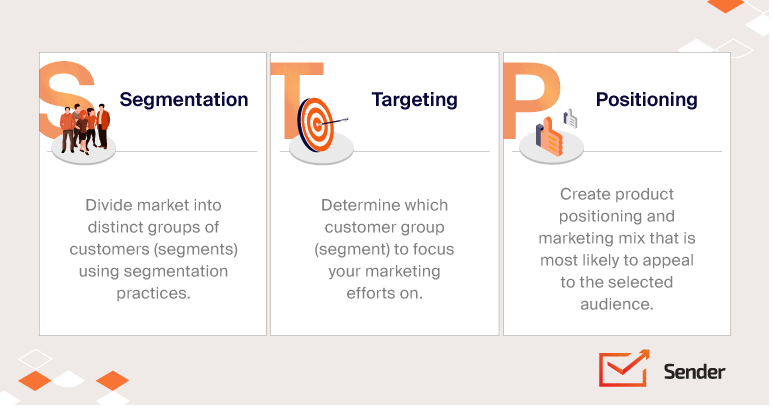
Steps to Launching One-to-One Marketing Campaigns
Launching a one-to-one marketing campaign requires a structured and strategic approach. While the concept may seem straightforward, successfully implementing a personalised marketing initiative demands careful planning, data collection, and technology integration. Below are the essential steps to ensure your one-to-one marketing strategy is effective from the outset.
1. Build Robust Databases
The cornerstone of any successful one-to-one marketing strategy is high-quality customer data. Understanding your customers thoroughly—what they need and when they need it—is crucial. Before you can execute real-time, personalised communications, your first task is to build a reliable database.
For example, if the price of a product drops or a popular item is back in stock, you should instantly know which customers to notify based on their browsing history. Begin by assessing the data you currently hold and determining how to use it most effectively in your one-to-one marketing campaign.
Don’t overlook qualitative customer data either. Numbers alone won’t tell the whole story. Gather insights from sales calls, customer support tickets, and feedback surveys to gain a fuller picture of your customer base. This additional information enriches your database and helps shape a more effective personalised marketing strategy.
2. Create Comprehensive Customer Profiles
Customer personas are often discussed in marketing, but one-to-one marketing requires even more granularity. To achieve true personalisation, you must create detailed profiles for each individual customer.
Utilise data from various sources to build these profiles:
- Browsing Data: What pages do they visit? How long do they stay on each page?
- Purchase Data: What have they bought in the past? Are there noticeable patterns?
- Abandoned Cart Data: Are they habitual cart abandoners, or was it a one-off?
- Customer Support Data: Have they interacted with your team? What issues did they raise?
- NPS (Net Promoter Score) Data: How satisfied are they with your business overall?
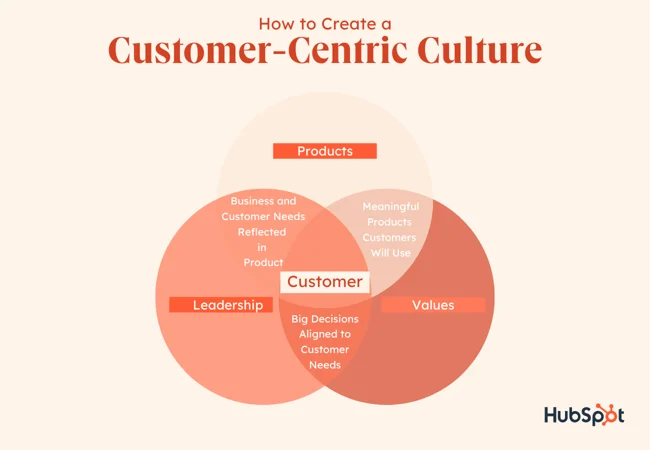
This deep level of insight helps you to understand where your customers are in the buying funnel and what steps are needed to convert them repeatedly. In other words, you’re not just building personas—you’re developing a one-to-one marketing strategy for each customer.
3. Design an Optimised Customer Journey
With robust profiles in place, the next step is to craft a seamless customer journey. Review your customer data for patterns—what actions do your loyal, repeat customers share? For instance, you might discover that most of your subscription service customers read three blog articles before subscribing.
Armed with these insights, you can now refine your one-to-one marketing strategy to pull the right levers at the right time. One example is tackling cart abandonment, which occurs in 65.57% of e-commerce transactions. Sending an email to address concerns or offer a reminder of the abandoned cart can significantly improve conversion rates and smooth out the journey for your customers.
Ultimately, the smoother you make the purchasing process, the more customers will choose to buy from you. And it all begins with leveraging data.
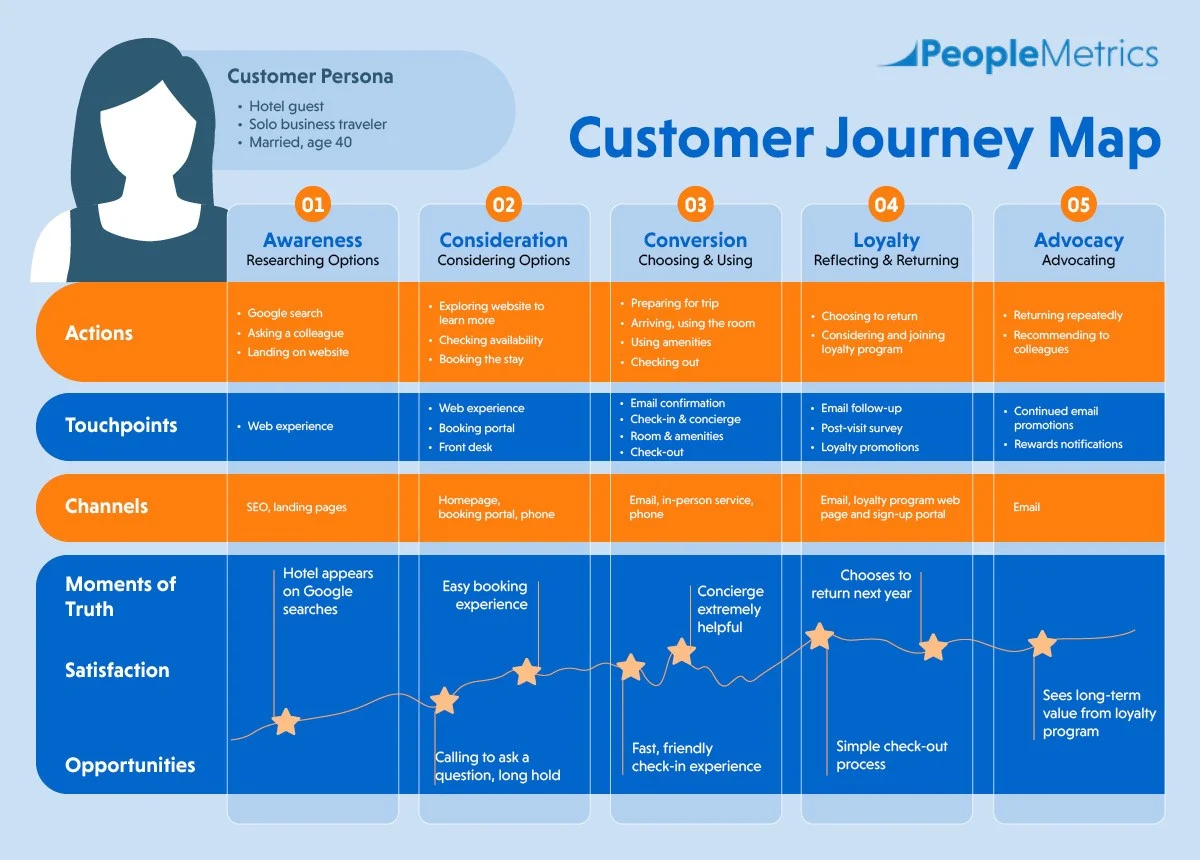
4. Assess Your Current Situation
Before diving into a one-to-one marketing campaign, it’s essential to assess your existing customer data collection and personalisation efforts. Understanding where you currently stand allows you to build on your strengths and identify gaps in your current strategy.
5. Set Clear Priorities and Goals
Every one-to-one marketing campaign should begin with clearly defined objectives. Are you aiming to boost customer loyalty? Increase sales? Improve satisfaction levels? Whatever your goals, ensure you have specific metrics, KPIs, and ROI targets to track progress. Regular analysis of these metrics will help you refine your approach and avoid unnecessary spending on tactics that aren’t delivering results.
Source: HBR
6. Find Reliable Technology Partners
To implement a data-driven one-to-one marketing strategy, you’ll need the right technology. Manual data collection, segmentation, and analysis are not only laborious but also prone to errors. By partnering with reliable tech providers, you can streamline these processes and focus on strategy execution.
Whether you’re building a system from scratch or customising an existing platform, investing in the right tools is critical for long-term success. A trusted technology partner can help you collect, store, and analyse customer data efficiently, empowering both your marketing and sales teams.
7. Commit to a Long-term Vision
One-to-one marketing isn’t a one-off project; it’s a long-term investment. Building strong, personalised relationships with your customers takes time, so it’s vital to plan for the long haul. Continuously engage with your customers through meaningful interactions, refine your approach using data insights, and adjust your personalised marketing strategy as needed.
Remember to track and analyse your performance regularly—this ongoing commitment will ensure your campaign remains aligned with evolving customer preferences.
Hidden Techniques in One-to-One Marketing
Successfully executing a one-to-one marketing strategy involves more than just the basics. To truly personalise your approach and create meaningful connections with your customers, it’s crucial to leverage the right channels. These channels will enable you to deliver tailored experiences that resonate with individual customers, thereby enhancing engagement and loyalty.
Key Channels for One-to-One Marketing
To maximise the effectiveness of your one-to-one marketing campaign, it’s essential to utilise a variety of channels that support personalised interactions:
- Customer Relationship Management (CRM): CRM systems are invaluable for tracking customer interactions, preferences, and purchase history. By leveraging this data, you can craft highly targeted communications, create personalised offers, and provide proactive customer support. This not only enhances the overall customer experience but also strengthens relationships over time.
- Website: Your website serves as a powerful tool for gathering customer data through methods such as surveys, forms, cookies, and browsing history. With this information, you can personalise the user experience, for example, by offering product recommendations tailored to individual preferences. This personalisation can significantly boost engagement, conversion rates, and overall customer satisfaction.
- Live Chat: Implementing live chat on your website allows you to engage with customers in real-time, answering questions, resolving issues, and building stronger relationships. Each interaction can be highly personalised, making customers feel valued and understood, which is a cornerstone of a successful personalised marketing strategy.
- Email: Email remains one of the most effective channels for one-to-one marketing. Utilise marketing automation tools to send personalised emails that cater to specific customer segments, offering relevant deals, tailored support, or content that aligns with their interests. This approach ensures your communications are both timely and relevant.
- Social Media: Social media platforms provide a direct line to your customers, allowing you to engage in meaningful conversations, offer customer service, and showcase your brand’s personality. Additionally, the advertising capabilities of these platforms enable you to create customised campaigns and personalised ads that target specific demographics or behaviours.
- Personal Interactions: Face-to-face meetings, phone calls, in-store visits, and interviews offer unparalleled opportunities to build deep, personal relationships with customers. By equipping your customer service representatives with detailed customer profiles, they can provide bespoke recommendations and solutions, further reinforcing the personal connection.
Exemplary One-to-One Marketing in Action
Several companies have excelled in deploying one-to-one marketing strategies, offering insightful examples of how personalisation can drive success.
- Loyalty Program: Sephora’s Beauty Insider programme is a prime one-to-one marketing example. With its tiered structure, the programme incentivises spending by offering increasingly valuable rewards. Sephora also personalises the customer experience by sending tailored offers, end-of-year discounts, and exclusive gifts, all of which reinforce customer loyalty.
- Recommended Products: Amazon’s recommendation engine is a masterclass in one-to-one marketing. As you browse products on Amazon, the site dynamically suggests items related to your interests, often based on your browsing and purchase history. This data-driven approach ensures that the recommendations are highly relevant, increasing the likelihood of a purchase.
- Personalised Email: Spotify’s year-end Wrapped campaign is a globally recognised one-to-one marketing example. By analysing each user’s listening habits, Spotify creates a personalised recap that highlights the music and artists that defined their year. This email campaign not only celebrates the user’s unique tastes but also deepens their connection with the platform.
Our Tactical Recommendations
We recommend leveraging data analytics and automation tools to create personalised campaigns, as clients often find this enhances engagement and retention. Engaging directly with customers through timely messaging and responses typically fosters stronger relationships and loyalty. Furthermore, developing targeted content strategies that address the specific needs of audience segments allows for greater relevance and deeper connections with customers.Get In Touch
The Challenges of One-to-One Marketing
Activating a one-to-one marketing strategy successfully is about more than just personalisation—it’s about aligning the strategy with your brand’s unique characteristics. To do this effectively, brands must keep a clear vision of their identity, balance the costs against the benefits, and always ensure that every decision supports the company’s long-term goals.
Challenges for Large Enterprises
While large companies often have vast resources at their disposal, they also face specific challenges when it comes to one-to-one marketing. The sheer size of their customer base can make it difficult to maintain the highly personalised, one-to-one connections that are essential for this strategy.
For larger businesses, differentiating between customers and delivering tailored experiences at scale requires careful use of automation. Manual interactions are not feasible when dealing with a vast customer pool. Brands must lean on automated solutions to deliver relevant, data-driven communications to the right people at the right time.
One of the key issues is that, in many cases, a substantial portion of revenue comes from a small percentage of high-value customers. As a result, companies need to focus their one-to-one marketing strategy on serving these top-tier customers more effectively. However, this doesn’t mean neglecting the wider audience—automation allows brands to deliver personalised messaging without the need for labour-intensive processes. Data-driven campaigns, powered by customer insights, are essential to achieving this balance.
Small Business Challenges
For small brands, the obstacles are quite different. While these businesses might have closer relationships with their customers, they often lack the resources to execute full-scale one-to-one marketing campaigns. The challenge here is in creating the right level of personalisation without overstretching limited resources.
Rather than trying to check every box in the one-to-one marketing playbook, small businesses should focus on their strengths—whether that’s agility, strong customer relationships, or the ability to quickly adapt. Automation can be a game-changer here as well, allowing smaller teams to create personalised experiences at scale without overwhelming their operations.
For example, rather than manually coding and sending each marketing message, automation tools can handle much of the heavy lifting. Small brands can also employ creative approaches, such as interactive campaigns using quizzes or games, to engage customers with personalised experiences without requiring significant investment.
Wide vs. Narrow Product Offerings
Another factor brands must consider when developing a one-to-one marketing strategy is the breadth of their product offering. A brand with a wide range of products, such as a department store, will have very different personalisation needs than a niche business offering a more limited selection.
A broad product catalogue allows for more varied messaging and greater opportunities for personalisation, as there are more ways to tailor communications based on customer preferences. For these brands, the challenge lies in constantly learning and adapting to what their customers want, leveraging data to refine their marketing messages over time.
Conversely, niche brands with a narrow product line can still benefit from one-to-one marketing but must approach it differently. Instead of focusing on diversity in product offerings, they can excel in understanding their customers’ deeper needs and preferences. Conducting in-depth product research and offering customisation options can make the customer experience feel just as personal, even with fewer products to promote.
